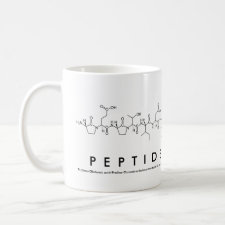
Authors: Song SH, Shirasaka K, Hirokawa Y, Asanuma H, Wada T, Sumaoka J, Komiyama M
Article Title: Molecular imprinting of cyclodextrin to physiologically active oligopeptides in water.
Publication date: 2010
Journal: Supramolecular Chemistry
Volume: 22
Issue: (3)
Page numbers: 149-155.
DOI: 10.1080/10610270902980622
Alternative URL: http://www.informaworld.com/10.1080/10610270902980622
Abstract: β-Cyclodextrin (β-CyD)-based polymeric receptors for γ-endorphin (γ-endor, an opioid heptadecapeptide) were prepared using the molecular imprinting method. When mono-3-(N-acrylamido)-3-deoxy-β-CyD bearing a vinyl group in the secondary hydroxyl side of the cavity of β-CyD was polymerised in water in the presence of γ-endor, the binding activity of the β-CyD polymer to this peptide in water was enormously promoted by the imprinting. By contrast, the bindings towards methionine-enkephalin (N-terminal pentapeptide of γ-endor) and its homologue leucine-enkephalin were suppressed. Thus, the binding of γ-endor by the imprinted polymer was highly selective. The imprinting towards γ-endor was also successful with the use of the β-CyD monomer bearing a vinyl group in the primary hydroxyl side of the cavity, although the recognition was less strict. Various factors affecting the imprinting efficiency (kinds of β-CyD vinyl monomer and template, as well as the pH of imprinting mixture) are discussed.
Template and target information: peptide, γ-endorphin, γ-endor
Author keywords: cyclodextrins, molecular imprinting, oligopeptides, column



Join the Society for Molecular Imprinting

New items RSS feed
Sign-up for e-mail updates:
Choose between receiving an occasional newsletter or more frequent e-mail alerts.
Click here to go to the sign-up page.
Is your name elemental or peptidic? Enter your name and find out by clicking either of the buttons below!
Other products you may like:
 MIPdatabase
MIPdatabase









